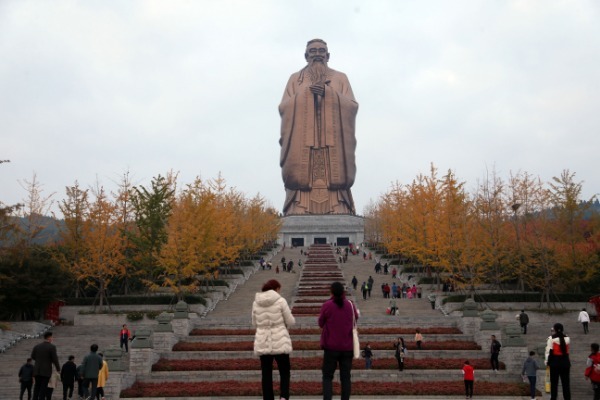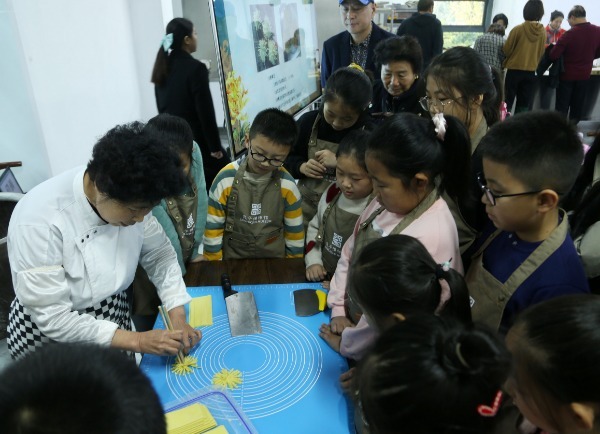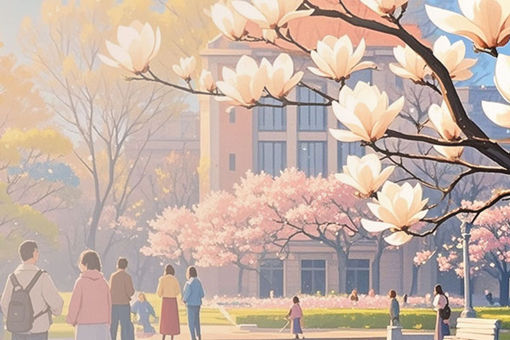Making a present of the past
By Yang Feiyue| (China Daily)| Updated : 2020-11-17
Print Print
Qufu's Nishan Sacred Land features a statue of Confucius. [Photo provided to China Daily]
Tourist attractions in East China's Shandong province are highlighting local cultural elements to lure visitors and promote deeper engagement with its historical sites.
The Confucius Museum in Qufu, for example, has rolled out historical dance and cultural-ritual performances to spice up the visitor experience.
The Confucius Museum covers an area of 57,000 square meters and brings together nearly 700,000 cultural relics, which were once kept privately in the Confucius Family Mansion.
The museum showcases Confucian teachings and relics collected by generations of Confucian disciples and serves as a place to learn about traditional culture.
"We have many children who come here every weekend to experience our learning program," says Guo Sike, the museum's curator.

Children learn to make pastries at the Confucius Museum in Qufu. [Photo provided to China Daily]
Children can learn to make the types of cakes and pastries that would have been served at the Confucius Family Mansion in the past, as well as take rubbings from a stone tablet and experience a ride in a horse-drawn wagon that was used to measure distance in ancient times.
To better tap into traditional culture, the museum is working on restoring more than 30,000 files from the Confucius Family Mansion.
About a 30-minute drive away, Nishan Sacred Land is also promoting deeper engagement with local culture, through study tours, night travel and art performances, to offer visitors a more captivating experience.
Visitors can transcribe Confucian classics, watch traditional performances and attend lectures on various aspects of Confucian culture.
Nishan Sacred Land is located on Nishan Mountain, which is regarded as the birthplace of Confucius. The complex covers an area of 35.76 square kilometers.
Light and water shows, drone performances and distinctive cultural and creative products are all being employed to allow the audience to better appreciate Confucianism, says Zhao Jialiang, an official with the Nishan resort.
The Confucius Institute, which is a 30-minute drive from Nishan Sacred Land, has also rolled out a dozen cultural experiences such as re-creations of ancient rituals, seal cutting and the tea ceremony for visitors, in addition to offering an elaborate display of the history behind the Confucian culture.
Related training is also offered to provide more insight into the profound thinking of the Chinese philosopher and politician.
These moves are all part of Qufu's efforts to use the local culture to boost its tourism industry.
The cultural-tourism initiative has fueled the development of study tours in the city, which received 1.52 million visitors last year, a year-on-year increase of 52 percent.

 Xi's Moments
Xi's Moments  Shandong gains remarkable results in promoting high-quality development
Shandong gains remarkable results in promoting high-quality development  Discover magnolia blossoms at Shandong University
Discover magnolia blossoms at Shandong University